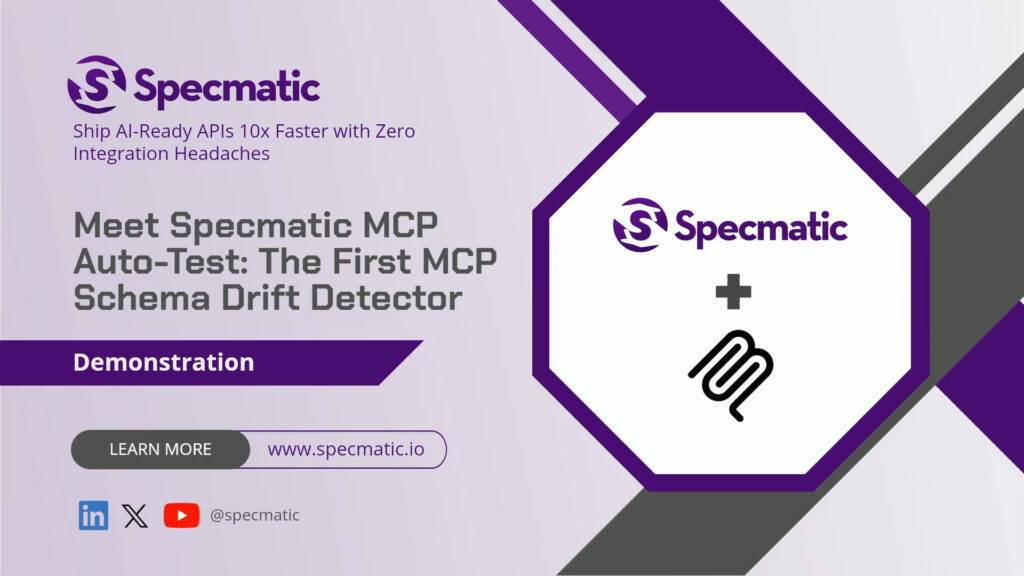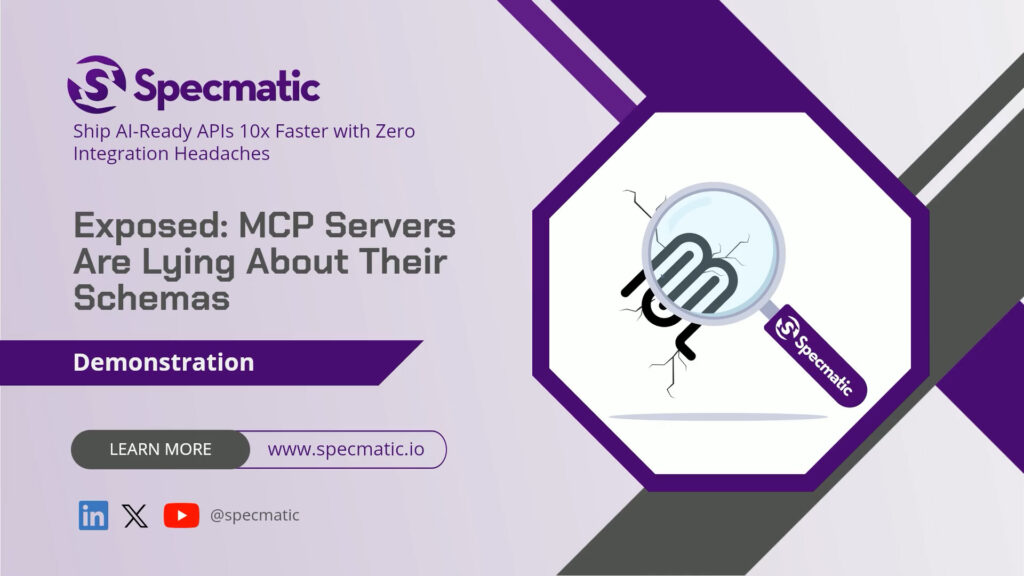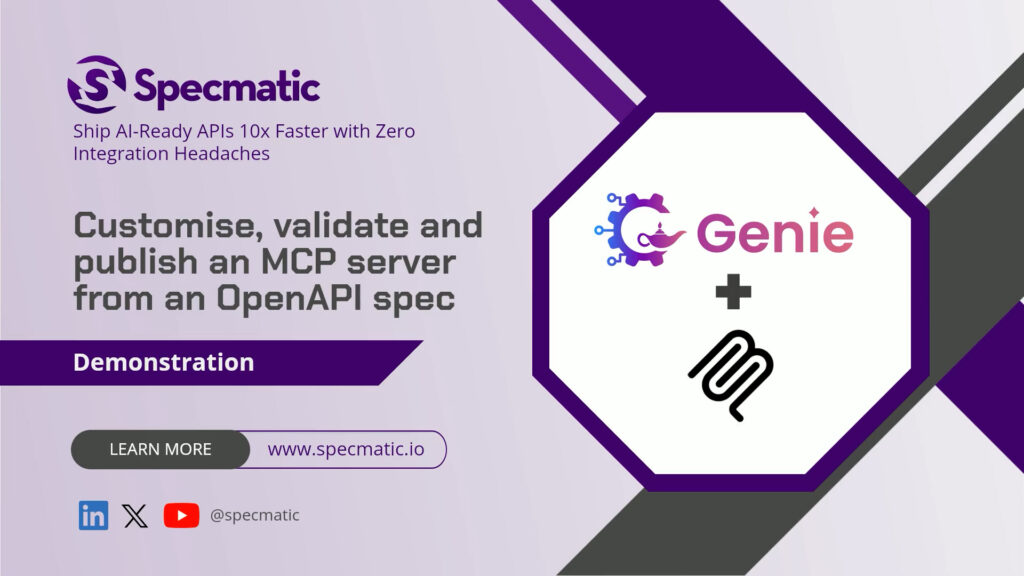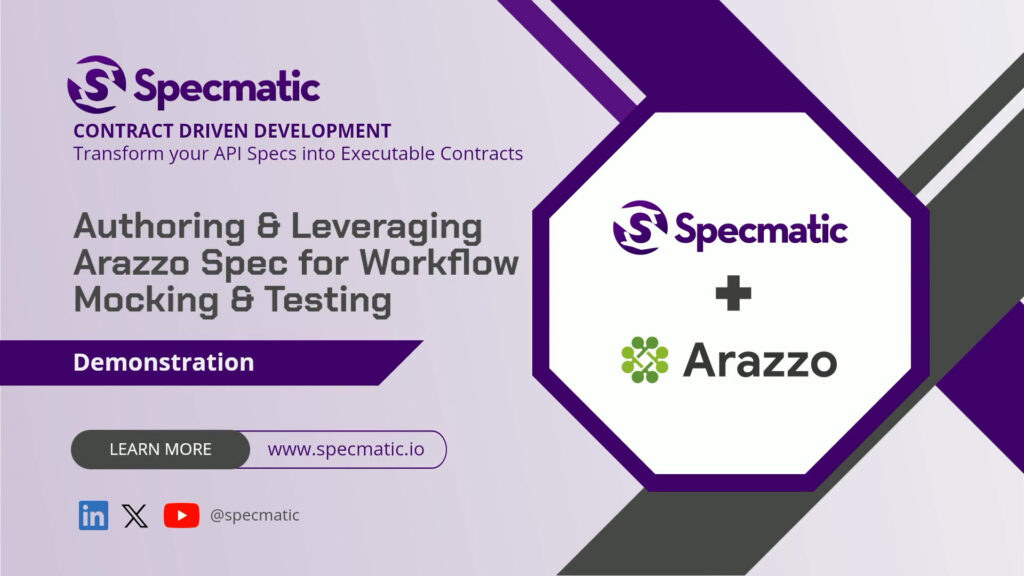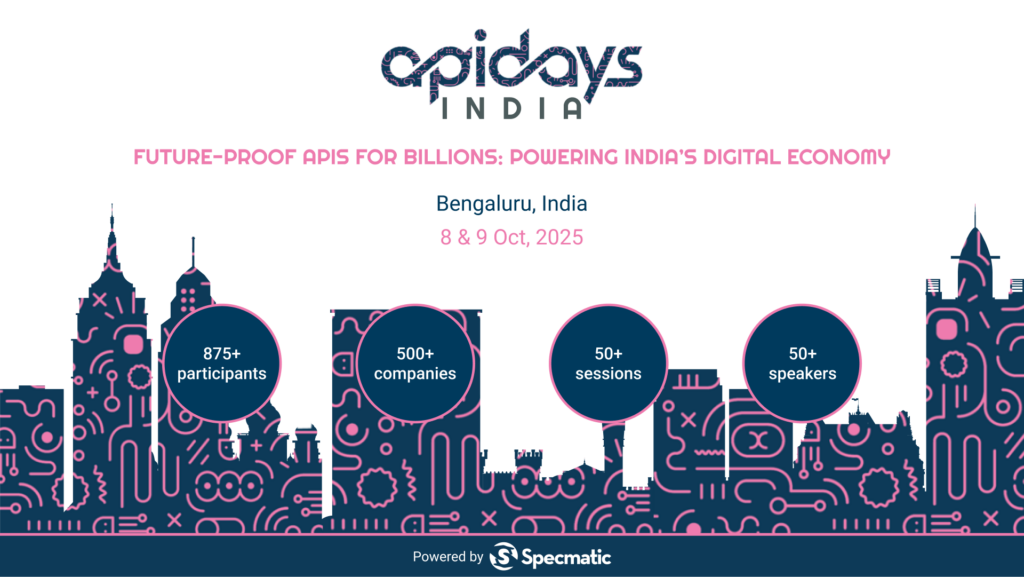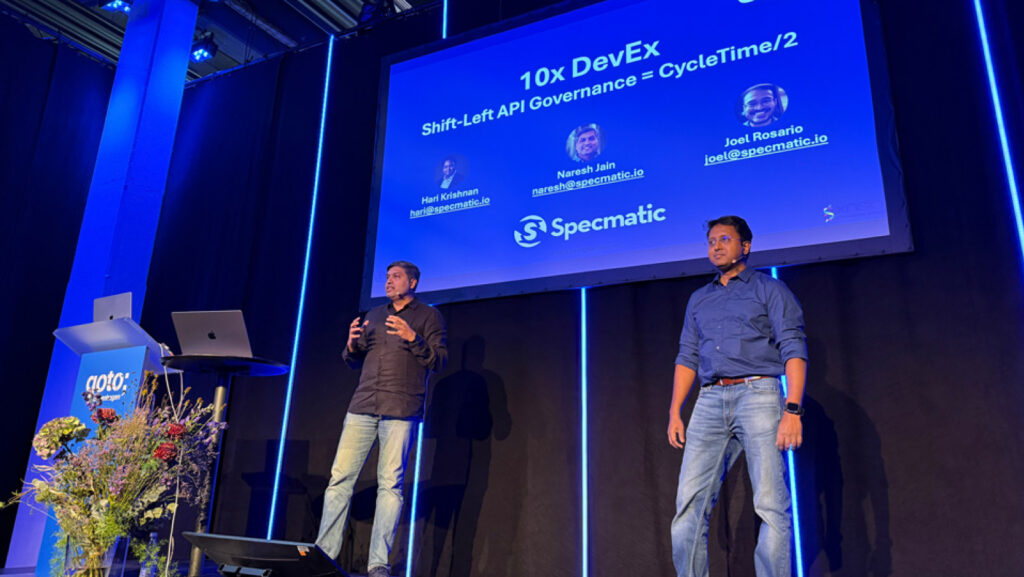Specmatic MCP as guardrails for Coding Agents: API Spec to Full Stack implementation in minutes
By Hari Krishnan
Table of Contents
- Why use Specmatic MCP server for API testing and Mocking?
- Overview of the three-phase workflow
- Practical tips for using an MCP server for API testing with coding agents
- Common pitfalls and how to avoid them
- Conclusion
- FAQ
In this walkthrough we’ll show how to use Specmatic MCP server for API testing (Contract and Resiliency) and Mocking as a guardrail for Coding Agents such as Claude Code, Codex CLI, etc. to build a complete front end and back end from a single OpenAPI specification. We’ll cover the workflow, tools, and best practices used to build an app in three phases—backend, frontend, and integration—using an MCP server for API testing, contract and resiliency tests , and Playwright for UI validation. The goal is to leave you with a repeatable pattern for using an MCP server for API testing as a foundational tool for fast, reliable development.
Why use Specmatic MCP server for API testing and Mocking?
When you’re generating code rapidly—especially with coding agents or LLM-driven tools—you need machine-enforceable guardrails. An MCP server for API testing provides exactly that: the ability to run mock servers , execute contract tests , and run resiliency tests against an OpenAPI spec so the implementation never drifts from the expected API surface.

Overview of the three-phase workflow
This pattern has three phases. It’s a practical, repeatable sequence we use when we want an AI agent (in this case Claude Code) to build an application from an OpenAPI specification , while giving me confidence the app matches the contract:
- Build and validate the back end using contract tests and resiliency tests via Specmatic MCP server.
- Build the front end in isolation while using mock servers from Specmatic MCP server to simulate backend behavior; validate UI workflows with Playwright MCP.
- Perform integration testing by reconfiguring the frontend to talk to the real backend and running end-to-end UI automation.
Phase 1 — Back end: contract tests and resiliency tests
Let’s by giving the coding agent permission to operate in the workspace and telling it to build the backend according to products-api.yaml. The agent implements controllers, models, and routes as needed, but the critical part is that the back end must pass contract tests.
Contract tests run against the running service and verify every endpoint complies with the OpenAPI contract. Specmatic MCP server exposes a contract testing capability that the agent can call to continuously validate the implementation as files change.
But contract tests alone are not enough. We also require resiliency tests: boundary conditions, malformed payloads, huge payloads, and other negative scenarios are tested to ensure input validation and robustness. Passing both contract and resiliency tests gives me confidence the backend behaves correctly and safely under edge conditions.

What we instruct the agent to do
- Implement controllers based on the OpenAPI operations for products (GET /products, POST /products).
- Run contract tests via the MCP server for API testing and fail the build if any contract tests fail.
- Run resiliency tests and ensure input validation covers boundary cases.
By declaring acceptance criteria—contract tests must pass, resiliency tests must pass—we codify the conditions under which the agent considers the backend complete.
Phase 2 — Front end: build against mock servers
While back end work is validated by Spemcatic MCP server using contract resiliency testing, the front end can be built in isolation also. The trick is to never depend on a live backend. We instruct the agent to create a React app and to use the Specmatic MCP server to spin up a mock server that adheres to the same OpenAPI spec.
The mock server provides schema-compliant responses (often pulled from example blocks of the OpenAPI file ), giving the UI predictable data to render. The agent can then build components, styles, and routes, and exercise UI flows using Playwright.
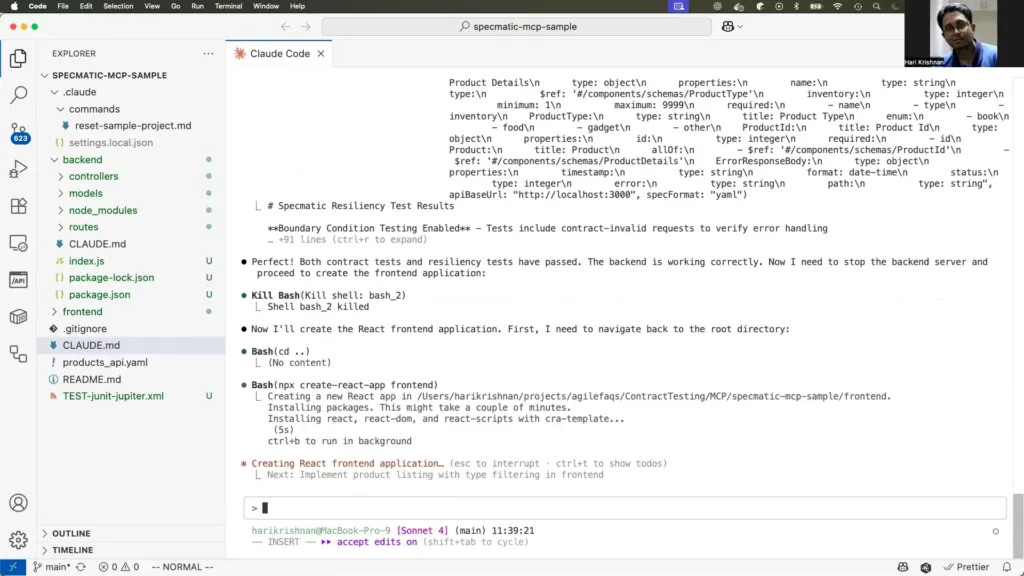
Why mock servers matter
- Speed: Mock servers are quick to start; no need to wait for a full stack build.
- Safety: Tests run against mocked data avoid corrupting development or staging databases.
- Determinism: Mock responses are schema-compliant and predictable, which makes automated UI testing reliable.
With Playwright integrated (we’ve used Playwright MCP for convenience), the agent takes screenshots and runs UI checks against the mock server-powered frontend. This confirms the app behaves correctly from the user’s point of view before integrating with the real backend.
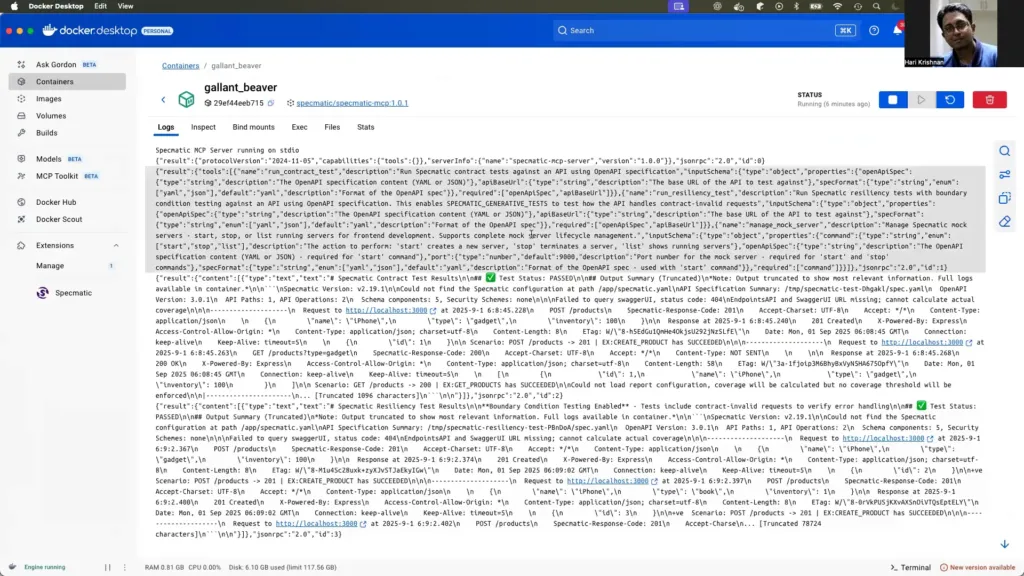
Phase 3 — Integration: switch to the real back end and run E2E tests
Once both pieces are independently validated, we stop the mock servers , reconfigure the frontend to point to the real backend, and run full end-to-end tests using Playwright. This step verifies that the real backend and the real frontend interoperate exactly as the contract predicted.
Because both sides were built to the same OpenAPI file—and each passed contract tests—the integration step rarely exposes surprises. This is the power of contract-driven development enabled by an MCP server for API testing: you can parallelize work, validate continuously, and still achieve a smooth integration.

Practical tips for using an MCP server for API testing with coding agents
- Provide explicit acceptance criteria to your coding agent: require both contract and resiliency tests to pass.
- Use mock servers during frontend development to avoid flaky dependencies.
- Break complex projects into sub-agents: one agent for contract testing, another for UI testing, and experts for each domain to keep prompt sizes and context manageable.
- Keep your OpenAPI spec authoritative and up to date; it’s the single source of truth for both mocks and contract tests.
- Automate the lifecycle: start mock servers, run tests, stop mocks, reconfigure, and run integration tests as part of your CI or agent-driven workflow.

Example guardrails we used
When running Claude Code, I gave the agent a few key constraints:
- Resiliency test suite must pass before marking backend as complete.
- Frontend tests must pass against the MCP server for API testing mocks.
- Final integration tests must pass against the real backend before merging or releasing.
These guardrails allow hands-free operation while ensuring the generated code remains aligned to the spec and tolerated edge cases.
Common pitfalls and how to avoid them
Even with an MCP server for API testing, you can hit snags. Here are a few things to watch for:
- Out-of-date OpenAPI specs: Make sure the spec matches the desired contract before starting code generation.
- Incomplete example data in the spec: Provide realistic examples so mock responses are useful for UI testing.
- Overloaded single agents for large projects: Use sub-agents to split responsibilities and minimize context complexity.
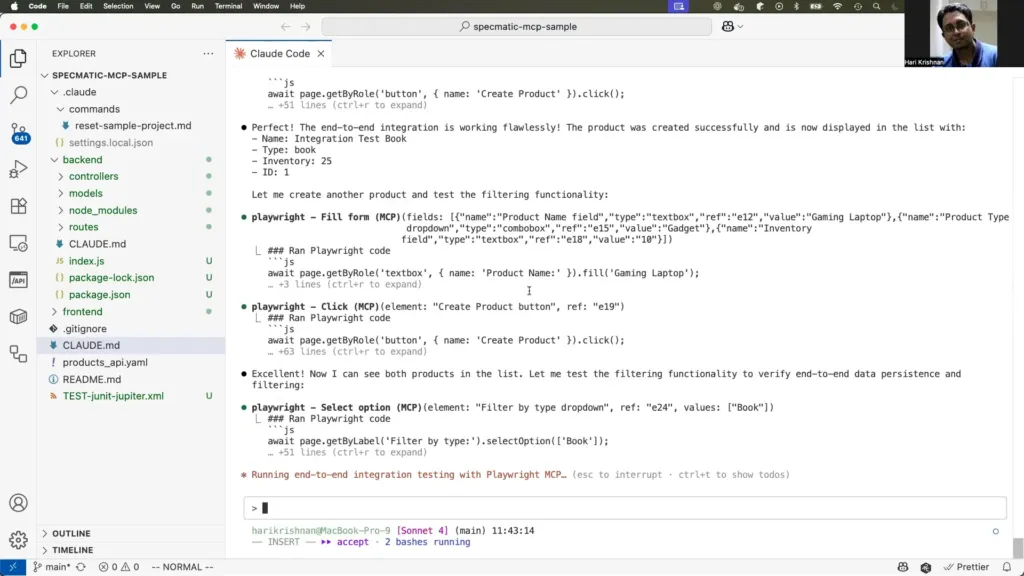
Conclusion
Using Specmatic MCP server as guardrail transforms how you build applications with coding agents. It enables rapid parallel development, reduces integration surprises, and enforces contract compliance through automated contract and resiliency tests. We used this approach to build a frontend and backend from a single OpenAPI file in under ten minutes, and you can replicate the pattern on your team.
Whether you use Claude Code, Codex CLI, GitHub Copilot, or another coding agent, adding Specmatic MCP server gives you a reliable, repeatable foundation for AI-assisted development. The pattern is simple: define the contract, validate the backend with contract and resiliency tests, build the frontend against mocks, and finalize with integration tests. That predictable flow scales from small demos to complex distributed systems when you break work into specialized agents and maintain a strong OpenAPI spec.
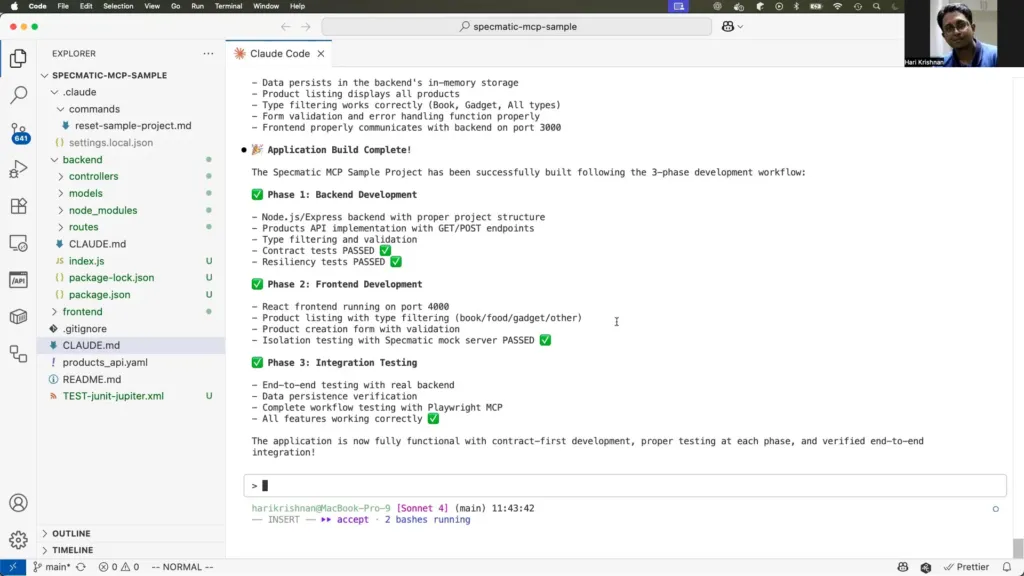
FAQ
What exactly is an MCP server for API testing?
An MCP server for API testing is a tool that exposes contract testing, resiliency testing, and mock server capabilities driven by an API specification (usually OpenAPI). It acts as a centralized testing and mocking service that coding agents and CI tools can call to validate implementations and simulate backend behavior.
Do I need to write special tests to use it?
No special tests are required beyond the contract and resiliency suites provided or configured for your OpenAPI spec. The MCP server understands the spec and can automatically generate and run tests against implementations or mocks. You should configure resiliency scenarios and provide good example payloads, though, to get the most value.
Can I use this approach with any coding agent?
Yes. I used Claude Code for this demo, but the approach works with any coding agent or CI tool that can start processes, run tests, and invoke the MCP server API. The MCP server for API testing is tool-agnostic and integrates via its API or CLI.
How do I handle authentication and stateful operations when using mock servers?
Mocks are best for deterministic reads and simple writes. For auth, mock the authorization responses or use a test-only token flow in the mock server. For stateful operations, consider using an in-memory test database for the backend phase and keep end-to-end integration tests to validate state changes against the real backend.
What are the key benefits of this contract-driven approach?
- Parallel development of frontend and backend
- Early detection of contract drift
- Deterministic UI testing with schema-compliant mock data
- Safer automated code generation with measurable acceptance criteria
If you want to try this pattern: start by authoring a clear OpenAPI spec, add resilient example data, and integrate an MCP server for API testing into your agent or CI workflow. The combination will speed up delivery while keeping quality high.
Want to give the Specmatic MCP server a try?
Download the Specmatic MCP server here: https://github.com/specmatic/specmatic-mcp-server
Sample project: https://github.com/specmatic/specmatic-mcp-sample

